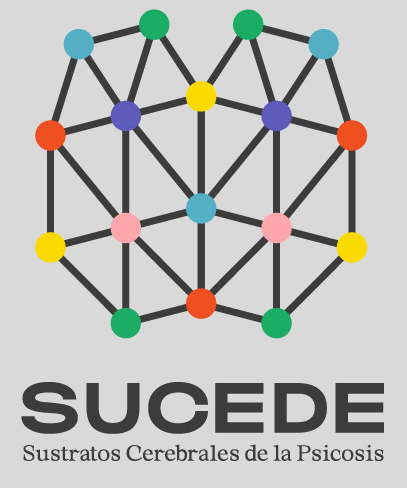Auditory evoked potentials, corollary discharge and alterations of the “Self” in psychotic disorder.
(Rosa M. Beño and Antonio Arjona, SUCEDE researchers). You can watch the video here (in Spanish).
As we have already commented on other occasions, Corollary Discharge (CD) is the mechanism that has the function of being able to distinguish perceptions that are self-generated from those that come from external sources. In order to perform this differentiation correctly, a copy of the motor acts is sent to sensory regions, predicting the sensory consequences that this motor act will generate and, after comparing with the consequences that actually occur, a suppression of sensory processing takes place. Several neurocognitive and phenomenological indicators have been proposed that may be indicative of alterations in the sense of self, among which is CD.
This mechanism has been studied in the various senses, but our study focuses especially on the perception of speech itself, studying the brain activity that takes place during vocalization by analyzing N1 recorded with electroencephalogram.
To encompass all this, our paradigm is composed of three conditions that assess the different aspects that articulate the sense of self:
- Talk: It would represent the sense of agency, in which the subject’s action is recognized as his or her own due to being the cause of an effect that takes place within a specific temporal window.
- Listen Self: With this condition we will come closer to analyzing the sense of ownership, in which the participant recognizes the authorship of an action by analyzing the physical characteristics of the stimulus he/she is perceiving.
- Listen Other: To finish, we intend to observe whether the difference between the processing of self-generated speech and external speech is due to the recognition of sensory features or to the CD that has been generated due to the motor speech act.
With all this we sought to see if in patients there is also an inhibition of the N1 component after vocalization and if the amplitude of this potential is correlated with the scores obtained in negative and positive symptoms assessed by the PANSS scale and with the abnormal experiences of the self assessed by the IPASE scale.
After extending our sample to 35 healthy controls, 34 people with schizophrenia and 11 with bipolar disorder, the results we have obtained are in line with those reported elsewhere. We observed that the group of patients with schizophrenia did not show an inhibition of N1 in the Talk condition, which we did observe in the healthy controls and in the group of patients with bipolar disorder.
The most novel aspect of the results shown on this occasion is that, for the first time, when analyzing the data obtained in the group of people with schizophrenia, we have differentiated those who were in a first episode (n=14) from those who already have a chronic illness (n=20). Both groups showed lower suppression of the N1 component compared to healthy controls, but this lower suppression was greater in patients presenting a first episode.
Regarding correlations with clinical symptoms, the extent of N1 in the Talk condition was correlated with the score obtained on the Self-consciousness and Somatization scales of the IPASE only in patients with a first episode. On the other hand, regarding the assessment with the PANSS scale, both groups of patients with schizophrenia showed positive correlations between amplitude and score obtained.
We will continue to increase the sample of patients in order to confirm, on the one hand, whether the group of patients in first psychotic episode show more alterations in the CD mechanism and a greater number of correlated symptoms and, on the other hand, whether the group of patients with bipolar disorder continues to show no differences with respect to healthy controls.



